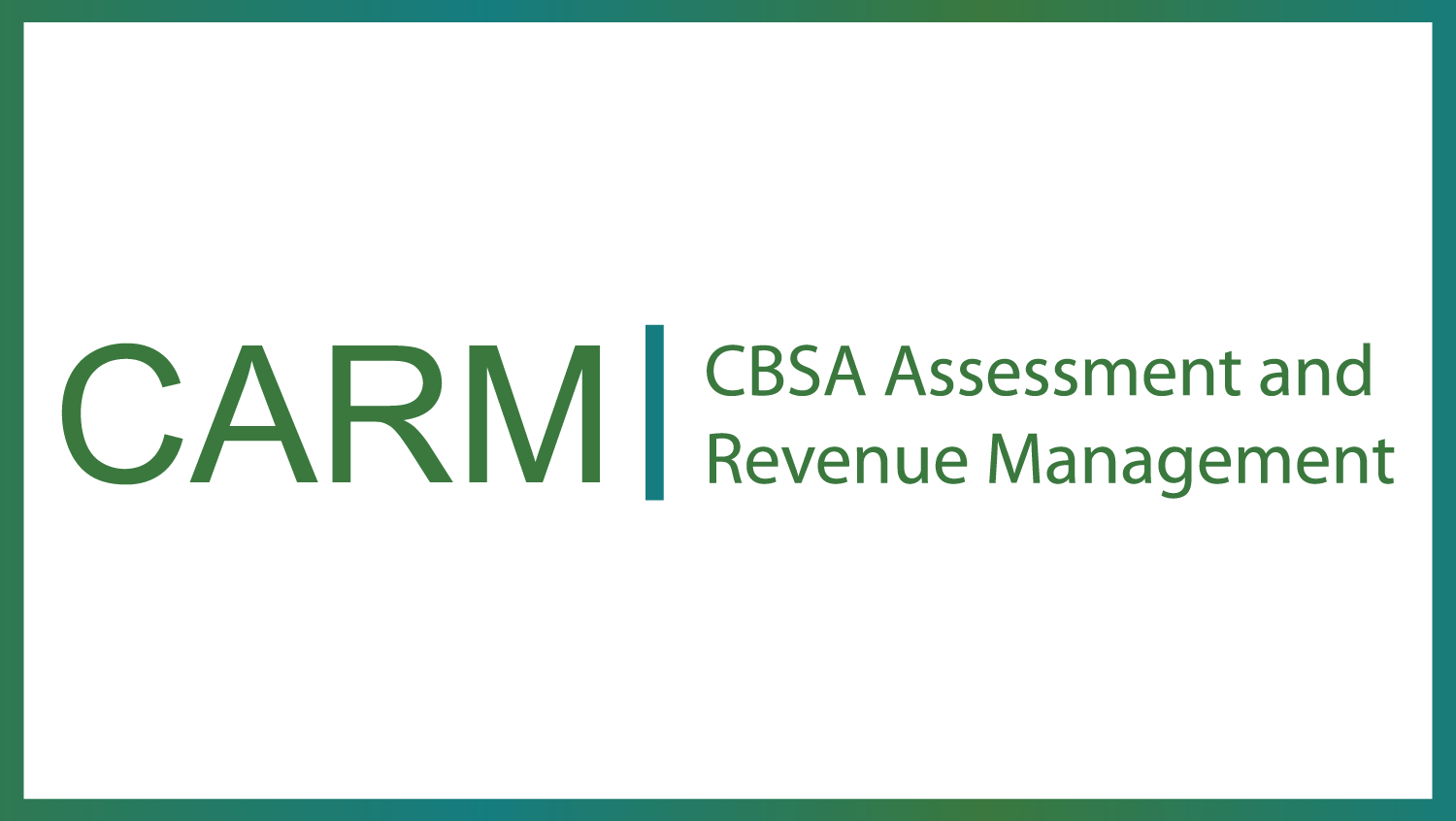
As we approach the launch of the second phase of CARM, it is important that you understand the benefits of this new initiative and how it will affect you.
What is CARM?
CARM is a program that has been rolled out over the past few years by the Canadian government to help improve the efficiency of importing goods into Canada.
CARM, an acronym for CBSA Assessment and Revenue Management, is a user-friendly digital platform that will help the Canada Border Service Agency (CBSA) collect duties and taxes for anything imported into Canada.
Who is an importer?
An importer is anyone, whether an individual person or a company, that brings goods into Canada from another country intending to sell those goods and therefore is responsible for paying duties and taxes on those items.
Categories of importers include:
- A Resident Importer (RI): A business or person who lives in Canada but buys goods from another country to sell within Canadian borders.
- A Non-Resident Importer (NRI): A business or person who lives outside of Canada buts ships products into the country to be sold.
Both of these types of importers are required to pay duties and taxes on their imported goods.
Why is CARM being implemented?
CARM is being implemented to help simplify and modernize the way CBSA monitors imported goods and manages revenue.
Streamlining the importing process is meant to encourage importers to bring their goods into Canada, which is crucial for the economy.
The goals of CARM are:
- Provide user-friendly online tools to help classify imported goods and calculate the duty and taxes.
- Make the process of working with CBSA easy and accessible for importers.
- View up-to-date account information and make payments online.
- Improve importer’s compliance with trade rules.
- Improve consistency with trade rules.
The phase of the CARM releases
CARM is being rolled out in two phases, release 1 and release 2.
Release 1 was implemented in May 2021, and release 2 has had a few release dates but is now said to finalize in the fall of 2023.
Release 1 allows importers to do the following online:
- Calculate the duty and taxes on their imports.
- Pay duty and taxes online.
- Classify goods.
- View their transactions and online account statements.
- Request a ruling if necessary.
- A chatbot to help users if needed.
Release 2 will expand the functions of CARM to include:
- All trade partners will be able to enroll their businesses and participate in the program.
- The ability to adjust or correct the Electronic Commercial Accounting Declarations (CAD).
- CAD will replace B3 and B2 custom coding forms. Making all of your history easy to find in one document.
- Options for duty and taxes billing cycles and new payment options.
- Importers can have their shipments released before payment through the Released Prior to Payment (RPP) Program.
- Business number registration will be required for imports through the CARM Client Portal (CCP).
CARM Client Portal (CCP)
At release 2, anyone who brings commercial goods into Canada must have a CCP in order to continue importing. Setting up an account is simple and will ensure there is no interruption to your business.
Here is a step-by-step when setting up your CCP
- Delegate key users. Identifying the key users of the portal before setting it up will help later down the line when you are in the CCP and need to delegate user roles. Accounting, executives, and anyone related to customs activities should be considered people to have access to the portal.
- Create a CARM Client Portal. Head over to the Government of Canada website to set up your account.
You can sign up with a sign-in partner. This option lets you create an account with all the information you already have on file with the sign-in partner. Generally, it is an online banking account that is used as a sign-in partner. None of your banking information will be shared, not even which sign-in partner is being used, but it is used to verify who you are.
If you don’t want to use one of the sign-in partners, you can register for a GCKey user ID and password. You may already have a GCKey through your CRA account, but creating a new one for your CCP through the portal would be a good idea so you don’t confuse your personal accounts with business accounts.
- Designate a Business Account Manager (BAM). The final step in setting up your CCP is designating a BAM.
A couple of things to consider when deciding whom to designate as the BAM to your account are:
- The person who is registered as the BAM will be given the highest level of control over your account and any other accounts linked to it.
- The BAM will need the legal information to link to your portal, such as GST information.
- Consider assigning a secondary BAM just in case you have a change in your employees; you don’t want to lose access to your CPP.
Benefits of CARM
The benefits of using CARM are meant to streamline the overall process of importing into Canada and make it so easy that importers want to bring their products here with a no-fuss, no-muss importing system.
A couple of key benefits include:
- Make the overall importing process into Canada simple and user-friendly.
- Modernize the interface used for importing.
- Cut down on the cost of importing.
- Improve compliance with trade rules.
- Provide importers with a fast way to access their information.
Conclusion
Importing is an essential part of Canada’s economy, so implementing a system that makes the process easy to understand and use is beneficial to the people importing and the economy overall.
Client support – CBSA Assessment and Revenue Management
CARM_R1_User Guide_Onboarding to the CARM Client Portal
Information_Sheet-Registering_a_Business_on_the_CARM_Client_Portal_October_2022
CARM_R1_User Guide_Delegation of Authority




